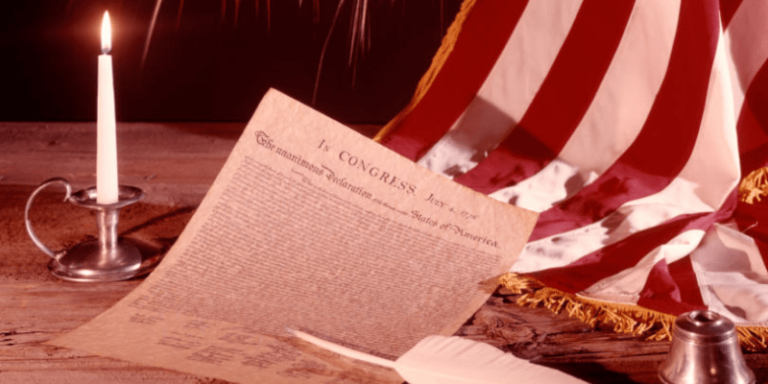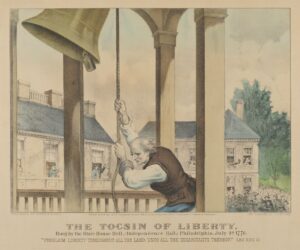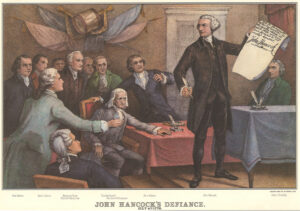Independence Day: The History You Might Not Know
John Adams always thought July 2 should be Independence Day.
By: Kelli Ballard | July 4, 2024 | 444 Words

(Photo by H. Armstrong Roberts/ClassicStock/Getty Images)
In April 1775, colonial militiamen and British troops fought in Lexington and Concord, Massachusetts, starting the American Revolution. Citizens of the 13 colonies were tired of English rule and rebelled. On July 2, 1776, the Continental Congress decided it was time to declare independence from Great Britain and drafted the Declaration of Independence.

(Photo by Heritage Art/Heritage Images via Getty Images)
July the What?
John Adams, who helped write the Declaration, always thought July 2 should be the day remembered as Independence Day. But two days later, on July 4, the Declaration of Independence was officially adopted at Independence Hall in Philadelphia.
On July 8, 1776, Philadelphia held the first Independence Day celebration, and the Declaration of Independence was read for the first time to the public. The people had gathered after the ringing of the Liberty Bell. Continuing in this tradition, every July 4, the descendants of the signers of the Declaration of Independence have the honor of tapping the Liberty Bell 13 times to represent the original 13 colonies.

(Photo by: Picturenow/Universal Images Group via Getty Images)
Charles Thomson and John Hancock were the only two of the 56 signees to put their signatures on the Declaration of Independence on July 4. The rest took turns signing over the month. No one knows, however, who put a message on the bottom of the document that reads “Original Declaration of Independence dated 4th of July 1776,” or when. Some believe it was added during the Revolutionary War because it was written upside down so that it could be visible when it was rolled up for transport – as parchment was preserved and stored at the time.
John Adams and Thomas Jefferson, both signers of the Declaration and former presidents, were also the best of friends. However, when Adams lost the presidential election of 1800 to Jefferson, the two had a falling out that lasted a couple of decades. Adams started to regret the rift in their friendship and wrote to Jefferson, saying, “You and I ought not to die, before We have explained ourselves to each other.” On July 4, 1826, Adams died. His final words were “Thomas Jefferson survives,” however, he had not known that Jefferson had passed away a few hours earlier. Adams died on the very day he had refused to acknowledge as Independence Day, still upset that it had not been July 2.
Today, we like to express our patriotism in different ways, such as flying the flag on our homes or wearing t-shirts and hats with the American flag displayed on them. However you celebrate, have a happy Fourth of July!
















